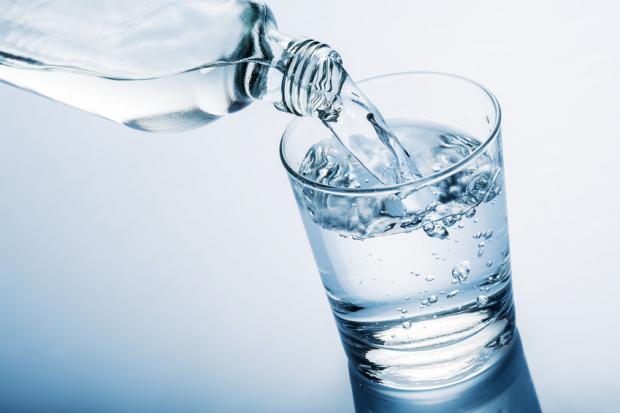
Breaking News
 2 Hours of Retro Sci-Fi Christmas Songs | Atomic-Age Christmas at a Snowy Ski Resort
2 Hours of Retro Sci-Fi Christmas Songs | Atomic-Age Christmas at a Snowy Ski Resort
 Alternative Ways to Buy Farmland
Alternative Ways to Buy Farmland
 LED lights are DEVASTATING our bodies, here's why | Redacted w Clayton Morris
LED lights are DEVASTATING our bodies, here's why | Redacted w Clayton Morris
Top Tech News
 Travel gadget promises to dry and iron your clothes – totally hands-free
Travel gadget promises to dry and iron your clothes – totally hands-free
 Perfect Aircrete, Kitchen Ingredients.
Perfect Aircrete, Kitchen Ingredients.
 Futuristic pixel-raising display lets you feel what's onscreen
Futuristic pixel-raising display lets you feel what's onscreen
 Cutting-Edge Facility Generates Pure Water and Hydrogen Fuel from Seawater for Mere Pennies
Cutting-Edge Facility Generates Pure Water and Hydrogen Fuel from Seawater for Mere Pennies
 This tiny dev board is packed with features for ambitious makers
This tiny dev board is packed with features for ambitious makers
 Scientists Discover Gel to Regrow Tooth Enamel
Scientists Discover Gel to Regrow Tooth Enamel
 Vitamin C and Dandelion Root Killing Cancer Cells -- as Former CDC Director Calls for COVID-19...
Vitamin C and Dandelion Root Killing Cancer Cells -- as Former CDC Director Calls for COVID-19...
 Galactic Brain: US firm plans space-based data centers, power grid to challenge China
Galactic Brain: US firm plans space-based data centers, power grid to challenge China
 A microbial cleanup for glyphosate just earned a patent. Here's why that matters
A microbial cleanup for glyphosate just earned a patent. Here's why that matters
 Japan Breaks Internet Speed Record with 5 Million Times Faster Data Transfer
Japan Breaks Internet Speed Record with 5 Million Times Faster Data Transfer
Properly Filter Your Water

Each year, red flags over toxic drinking water are raised across the U.S., with reasons varying from location to location. One major problem is aging water pipes, which have become an increasingly common source of toxic exposure.1 In fact, in a 2013 report,2 the American Society for Civil Engineers warned that most of the drinking water infrastructure across the nation is "nearing the end of its useful life."
The American Water Works Association estimates it would cost more than $1 trillion to update and replace all the water pipes in the U.S. — money that many water utilities do not have. Water pollution is another grave concern, as water treatment plants cannot filter out all of the toxins now entering the water, from firefighting chemicals3 and agricultural chemicals,4,5 to drugs and microcystins, nerve toxins produced by freshwater cyanobacteria.6
Filtering Your Water Is a Health Priority
While the U.S. has many water quality concerns, it doesn't really matter where you live anymore, as many dangerous chemicals find their way into the ecosystem, spreading from one continent to another.7 The take-home message is that, if you care about your health, filtering your household water is more a necessity than an option these days.
Ideally, filter the water you use both for drinking and bathing, as immersing yourself in contaminated water may be even more hazardous to your health than drinking it. Chemicals absorbed through your skin go directly into your blood stream, bypassing your digestive- and internal filtration systems. Unfiltered water can also expose you to dangerous chlorine vapors and chloroform gas, which can cause dizziness, fatigue, asthma, airway inflammation and respiratory allergies.
Chlorine can vaporize from every toilet bowl in your home and every time you wash your clothes or dishes, or take a shower or bath, so if you get your water from a municipal water supply and don't have a whole house filter, be sure to open windows on opposing sides of your home to cross ventilate. Keep the windows open for five to 10 minutes a day to remove these gases.
At-Home Water Filtration Is a Must for Clean Pure Water
Most water supplies contain a number of potentially hazardous contaminants at varying levels. Among the worst are disinfection byproducts (DBPs). In water treatment facilities that use chlorine or chloramines to treat and purify the water, toxic DBPs form when these disinfectants react with natural organic matter like decaying vegetation in the source water.
These byproducts are over 1,000 times more toxic than chlorine, and of all the toxins and contaminants present in your water, such as fluoride and miscellaneous pharmaceutical drugs, DBPs are likely the most hazardous.
Trihalomethanes (THMs), one of the most common DBPs, are Cancer Group B carcinogens, meaning they've been shown to cause cancer in laboratory animals. They've also been linked to reproductive problems in both animals and humans, such as spontaneous abortion, stillbirths and congenital malformations, even at lower levels. These types of DBPs may also:
Weaken your immune system
Disrupt your central nervous system
Damage your cardiovascular system
Disrupt your renal system
Cause respiratory problems
What's Really in Your Water?
If you have well water, it would be prudent to have your water tested for arsenic and other contaminants. If you have public water, you can get a local drinking water quality report from the Environmental Protection Agency (EPA).8 The EPA regulates tap water in the U.S., but while there are legal limits on many of the contaminants permitted in municipal water supplies, more than half of the 300-plus chemicals detected in U.S. drinking water are unregulated,9 and some of the legal limits may be too lenient for safety.

 $100 SILVER CONFIRMED?
$100 SILVER CONFIRMED?

